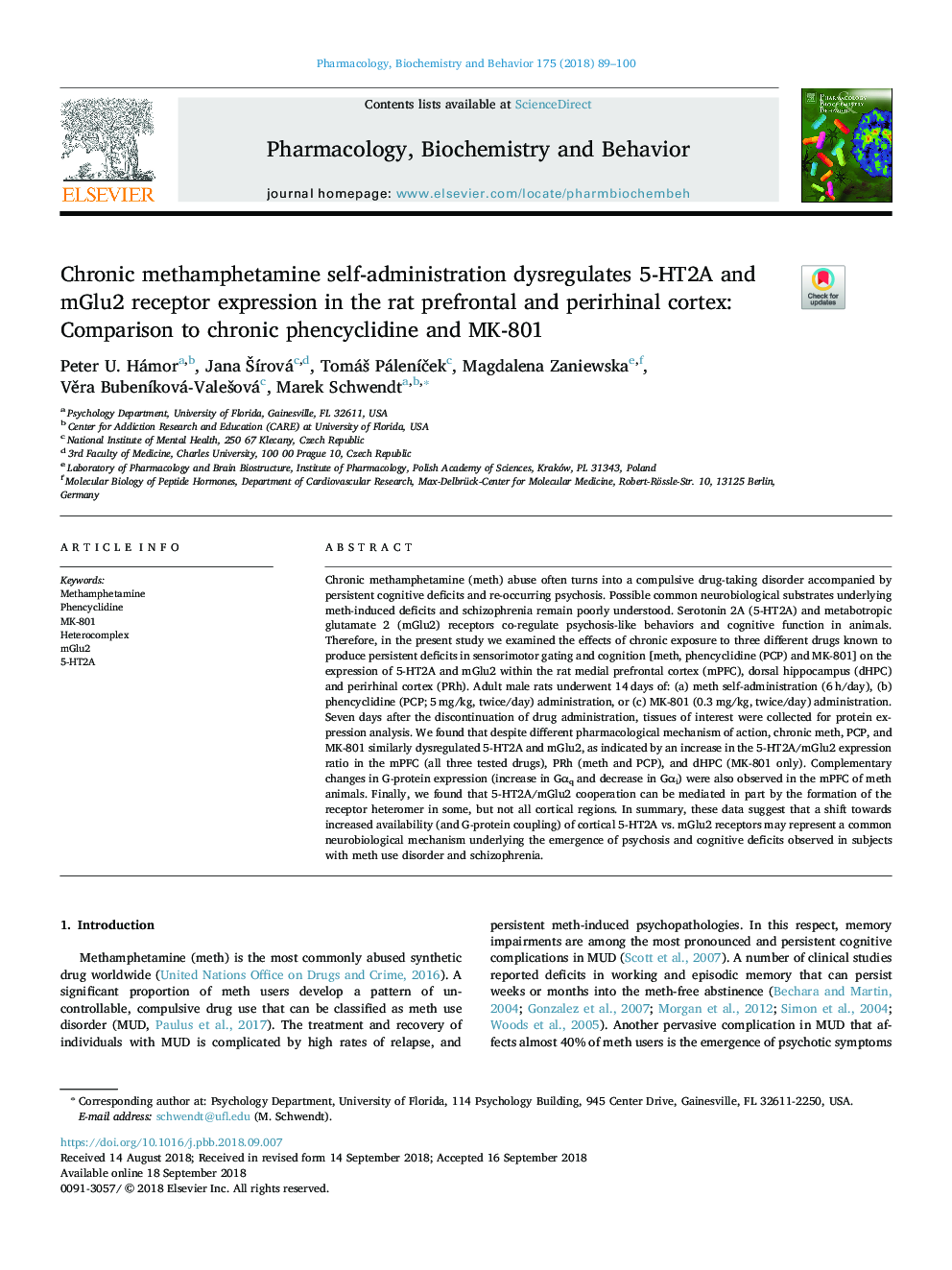| Article ID | Journal | Published Year | Pages | File Type |
|---|---|---|---|---|
| 11029385 | Pharmacology Biochemistry and Behavior | 2018 | 12 Pages |
Abstract
Chronic methamphetamine (meth) abuse often turns into a compulsive drug-taking disorder accompanied by persistent cognitive deficits and re-occurring psychosis. Possible common neurobiological substrates underlying meth-induced deficits and schizophrenia remain poorly understood. Serotonin 2A (5-HT2A) and metabotropic glutamate 2 (mGlu2) receptors co-regulate psychosis-like behaviors and cognitive function in animals. Therefore, in the present study we examined the effects of chronic exposure to three different drugs known to produce persistent deficits in sensorimotor gating and cognition [meth, phencyclidine (PCP) and MK-801] on the expression of 5-HT2A and mGlu2 within the rat medial prefrontal cortex (mPFC), dorsal hippocampus (dHPC) and perirhinal cortex (PRh). Adult male rats underwent 14â¯days of: (a) meth self-administration (6â¯h/day), (b) phencyclidine (PCP; 5â¯mg/kg, twice/day) administration, or (c) MK-801 (0.3â¯mg/kg, twice/day) administration. Seven days after the discontinuation of drug administration, tissues of interest were collected for protein expression analysis. We found that despite different pharmacological mechanism of action, chronic meth, PCP, and MK-801 similarly dysregulated 5-HT2A and mGlu2, as indicated by an increase in the 5-HT2A/mGlu2 expression ratio in the mPFC (all three tested drugs), PRh (meth and PCP), and dHPC (MK-801 only). Complementary changes in G-protein expression (increase in Gαq and decrease in Gαi) were also observed in the mPFC of meth animals. Finally, we found that 5-HT2A/mGlu2 cooperation can be mediated in part by the formation of the receptor heteromer in some, but not all cortical regions. In summary, these data suggest that a shift towards increased availability (and G-protein coupling) of cortical 5-HT2A vs. mGlu2 receptors may represent a common neurobiological mechanism underlying the emergence of psychosis and cognitive deficits observed in subjects with meth use disorder and schizophrenia.
Related Topics
Life Sciences
Biochemistry, Genetics and Molecular Biology
Biochemistry
Authors
Peter U. Hámor, Jana Å Ãrová, TomáÅ¡ PálenÃÄek, Magdalena Zaniewska, VÄra BubenÃková-ValeÅ¡ová, Marek Schwendt,
